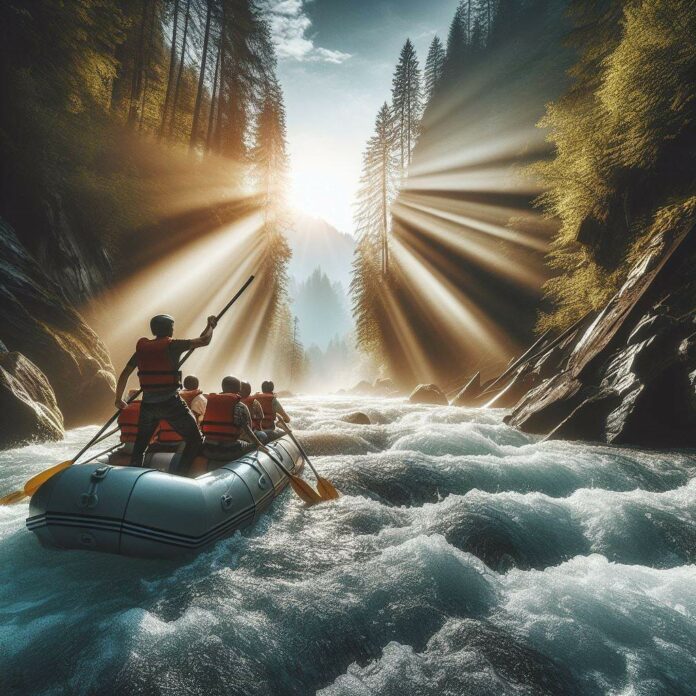River rafting is an exhilarating adventure that offers a unique blend of excitement and thrill. The experience of navigating through the rushing rapids while being surrounded by stunning natural landscapes is truly amazing.
One of the key aspects of river rafting adventure is the adrenaline rush it provides. The fast-paced nature of the activity, combined with the unpredictability of the rapids, creates an intense and thrilling experience. The feeling of conquering each rapid is both exciting and rewarding, making river rafting a favorite activity for adrenaline junkies.
Researching the factors to consider when selecting a river, such as water flow, rapids classification, and safety records, will ensure that you choose a destination that matches your skill level and preference.
Choosing the Right River and Destination
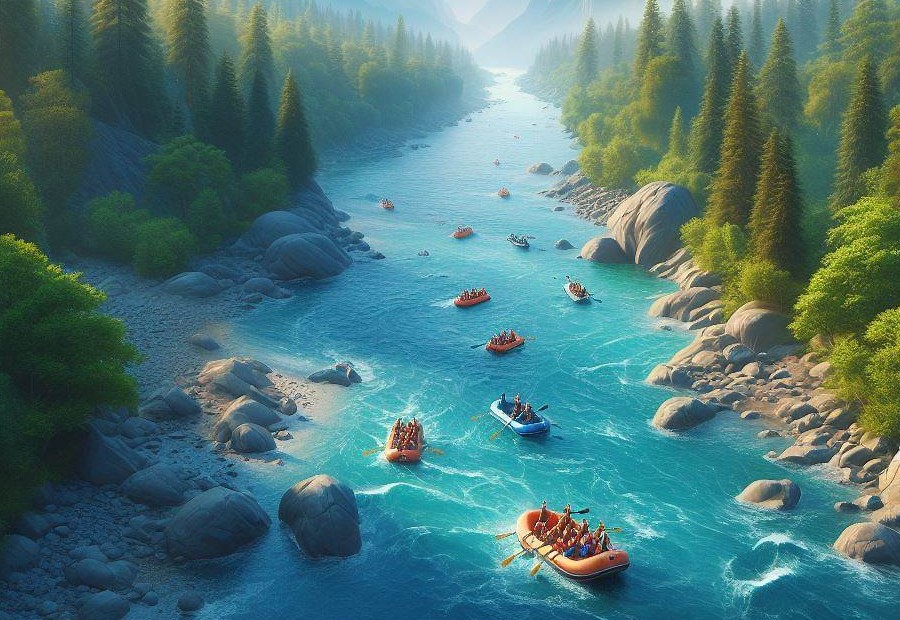
Factors to Consider when Selecting a River
When selecting a river for your rafting adventure, there are several factors to consider:
- Water Level: When choosing a river for rafting, it is important to check the current water level. High water levels can add a challenge to the rapids, while low water levels may result in a less thrilling experience.
- Rapids Classification: When selecting a river, take into account the classification of the rapids. Beginners may prefer Class I and II rapids, while experienced rafters might seek the thrill of Class III and above rapids.
- Scenery: One factor to consider when choosing a river is the scenery you prefer. Decide if you want to paddle through scenic canyons, lush forests, or wide open landscapes, and select a river with the natural beauty that appeals to you.
- Accessibility: The accessibility of the river is also significant. Take note of whether the river is easily accessible or if it requires long hikes or special permits. Choosing a river with convenient entry points can enhance your overall experience.
- Length of Trip: Determine how long you want your rafting trip to be. Some rivers offer day trips, while others provide multi-day options with camping opportunities along the way. Consider your preferences and select a river that aligns with your desired trip length.
- Local Guides or Tour Operators: It is essential to research and consider local guides or tour operators when planning a rafting trip. Read reviews and evaluate their reputation to ensure a safe and enjoyable experience on the river.
Popular River Rafting Destinations
When it comes to popular river rafting destinations, there are several amazing locations around the world that offer thrilling experiences.
Here are some popular river rafting destinations to consider:
- Colorado River, United States: Known for its breathtaking canyons and challenging rapids, the Colorado River offers unforgettable rafting adventures.
- Zambezi River, Zimbabwe and Zambia: Rafting on the Zambezi River provides an adrenaline-pumping experience with its powerful rapids, including the famous Victoria Falls.
- Chilko River, Canada: With its stunning wilderness, the Chilko River offers thrilling rapids and breathtaking scenery for an unforgettable rafting experience.
- Franklin River, Australia: Located in remote Tasmania, the Franklin River is known for its pristine beauty and challenging rapids, attracting adventurous rafters.
- Tatshenshini River, Canada and Alaska: The Tatshenshini River offers a unique combination of stunning landscapes, abundant wildlife, and exhilarating rapids for an unforgettable rafting journey.
These popular river rafting destinations offer a range of experiences for both experienced rafters and beginners. Whether you’re seeking adrenaline-pumping rapids or breathtaking scenery, there’s a destination that will cater to your adventure preferences.
Remember to always prioritize safety and choose a reputable rafting company to ensure an enjoyable and memorable experience.
Understanding the Different Types of River Rafting
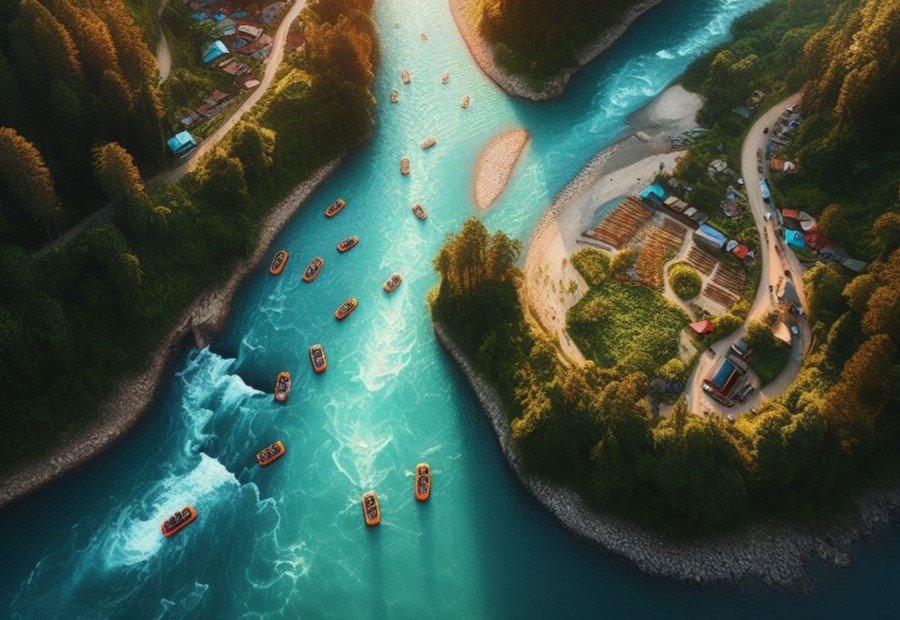
When it comes to preparing for a thrilling river rafting adventure, it’s essential to understand the different types of river rapids. In this section, we’ll take a closer look at the classification of river rapids and how they determine the level of difficulty.
Whether you’re a beginner seeking a milder experience or a thrill-seeking adrenaline junkie, this section will provide insights to help you decide on the right challenge level for your epic river rafting expedition!
Classification of River Rapids
When it comes to river rafting, understanding the classification of river rapids is crucial for your safety and enjoyment. Rapids are categorized based on their difficulty level, which is determined by factors such as size, speed, and obstacles.
Here is a breakdown of the different classifications:
- Class I Rapids: These are gentle and easy to navigate, with small waves and no significant obstacles. They are perfect for beginners and provide a smooth introduction to river rafting.
- Class II Rapids: These rapids have slightly larger waves and a few obstacles that require maneuvering. They offer a fun and mildly challenging experience for rafters with basic skills.
- Class III Rapids: With moderate waves, strong currents, and larger obstacles, Class III rapids require more skill and experience. Rafters must be able to make precise maneuvers to navigate safely.
- Class IV Rapids: These rapids are characterized by large waves, turbulent water, and complex maneuvers. They demand advanced paddling skills, and rafters should be prepared for intense and challenging conditions.
- Class V Rapids: This category includes highly difficult rapids with extreme waves, turbulent water, and numerous obstacles. Only experienced and expert rafters should attempt Class V rapids, as they require exceptional skill, strength, and agility.
- Class VI Rapids: These rapids are considered extremely dangerous and are not typically recommended for rafting. They feature treacherous conditions, such as steep drops and unpredictable water flow, which can pose significant risks to even the most experienced rafters.
Deciding on the Difficulty Level
When deciding on the difficulty level for your river rafting adventure, it is important to consider the following:
- Understanding your skill and experience: Assess your rafting skills and experience level honestly. If you are a beginner, it is advisable to choose a river with lower difficulty levels to ensure your safety.
- Classification of river rapids: Familiarize yourself with the classification system for river rapids. Class I and II rapids are considered to be easy and are suitable for beginners. Class III rapids offer moderate difficulty, while Class IV and V rapids are more challenging and require advanced skills.
- Consider the water conditions: The water conditions, such as the water volume and speed, can affect the difficulty level of the river. High water levels and faster flows can increase the challenge, while lower water levels may make the river easier to navigate.
- Consult with experienced rafters: Seek advice from experienced rafters or tour operators who can provide insights into the difficulty levels of different rivers. They can help you choose a river that matches your skill level and comfort.
Pro-tip: It’s always recommended to start with a river that matches your current skill level and gradually progress to more difficult rivers as you gain experience and confidence in your rafting abilities.
Essential Equipment for River Rafting
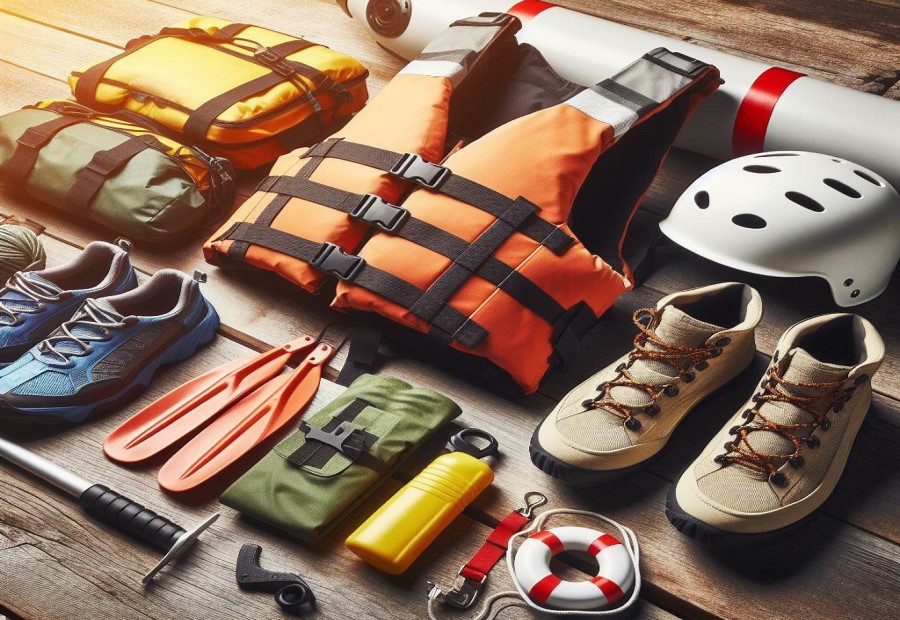
Basic Safety Gear
When embarking on a river rafting adventure, it is crucial to have the right basic safety gear to ensure your safety throughout the experience. Here are some essential items to include:
- Helmet: A helmet is vital for protecting your head from potential injuries caused by rocks or other objects in the water.
- Life jacket: Wearing a properly fitted and Coast Guard-approved life jacket is crucial for buoyancy and safety. It will keep you afloat and provide added security in case of emergencies.
- Waterproof whistle: A waterproof whistle can be used to alert others in case of distress or an emergency situation. It is essential for communication on the river.
- River shoes: Sturdy and closed-toe river shoes provide proper grip and protection for your feet. They help prevent slips on wet rocks and protect against sharp objects in the water.
- Appropriate clothing: Dressing in quick-drying and moisture-wicking materials is important for comfort and safety. Avoid cotton as it retains water and can make you feel cold.
- Throw bag: A throw bag is a rescue device used to throw a rope to someone in the water who needs assistance. It is an essential tool in case of emergencies.
- Sun protection: Don’t forget to bring sunscreen, sunglasses, and a hat to protect yourself from the sun’s harmful rays and reduce the risk of sunburn.
- First aid kit: Having a basic first aid kit with supplies like band aids, adhesive tape, antiseptic wipes, and pain relievers is important for addressing minor injuries on the river.
Ensuring that you have these key items of basic safety gear will help provide a safer and more enjoyable river rafting experience.
Physical Fitness and Health Considerations
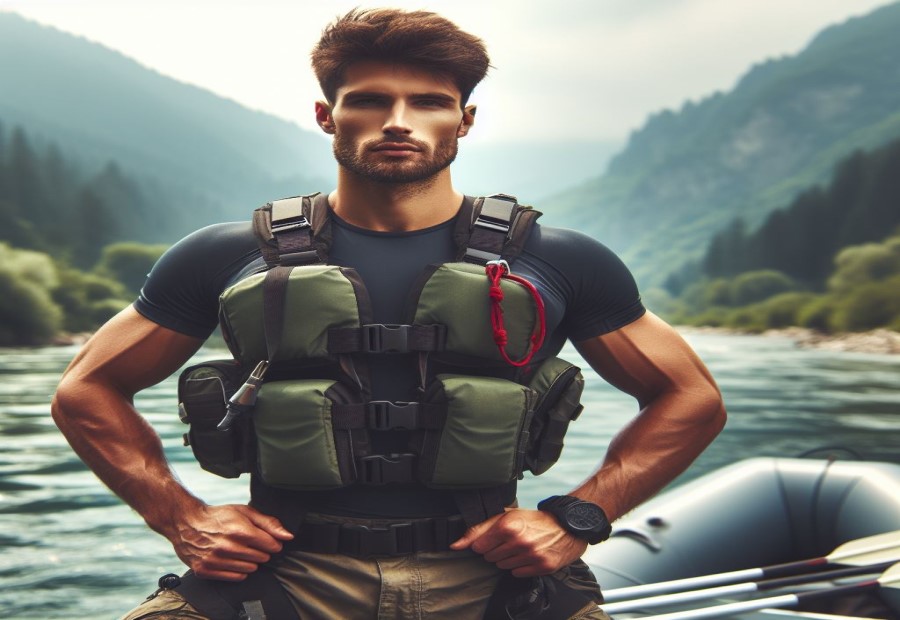
When gearing up for an exhilarating river rafting adventure, your physical fitness and health are of utmost importance. In this section, we’ll explore two crucial factors: assessing your fitness level and consulting with a medical professional.
These key steps will ensure that you’re ready to take on the rapids, providing practical insights and advice to make your river rafting experience a safe and enjoyable one. So let’s dive in and discover how to fully prepare yourself for this thrilling adventure!
Assessing Your Fitness Level
Assessing your fitness level is an important step before embarking on a river rafting adventure.
- Evaluate your cardiovascular endurance by going for a brisk walk, jog, or cycling for at least 30 minutes. Assess your ability to sustain moderate-intensity physical activity for an extended period of time.
- Test your upper body strength by performing exercises such as push-ups and pull-ups. Focus on your ability to lift and maneuver objects, as you may need to paddle and navigate during rafting.
- Assess your core strength and stability by practicing exercises like planks and sit-ups. A strong core will help you maintain balance and stability on the raft.
- Check your flexibility by performing stretches for major muscle groups. Flexibility is important to prevent injuries and to be able to maneuver on the raft comfortably.
- Consider any existing medical conditions or injuries that could potentially affect your ability to participate in rafting. Consult with a medical professional if necessary to ensure it is safe for you to engage in this physical activity.
Consulting with a Medical Professional
When preparing for a river rafting adventure, it is crucial to consult with a medical professional. Consulting with a medical professional is essential to ensure that you are physically fit and healthy enough to participate in the activity.
A medical professional can assess your overall health and provide guidance based on your individual circumstances. They can help determine if you have any pre-existing medical conditions that may impact your ability to safely engage in river rafting.
It is important to be transparent and provide the medical professional with accurate information about your medical history, including any previous injuries or surgeries.
Consulting with a medical professional will allow them to advise you on any precautions you may need to take or specific exercises you should do to prepare for the physical demands of river rafting.
By consulting with a medical professional, you can receive personalized advice on how to protect your well-being during the adventure. They can provide recommendations on any necessary vaccinations, medications, or special care you may need while on the trip.
It’s crucial to prioritize your safety and follow their guidance to have a safe and enjoyable river rafting experience.
Remember, while river rafting can be exciting and thrilling, your health should always come first. Consulting with a medical professional will give you peace of mind and ensure that you are well-prepared for the adventure.
Learning Basic Skills and Techniques
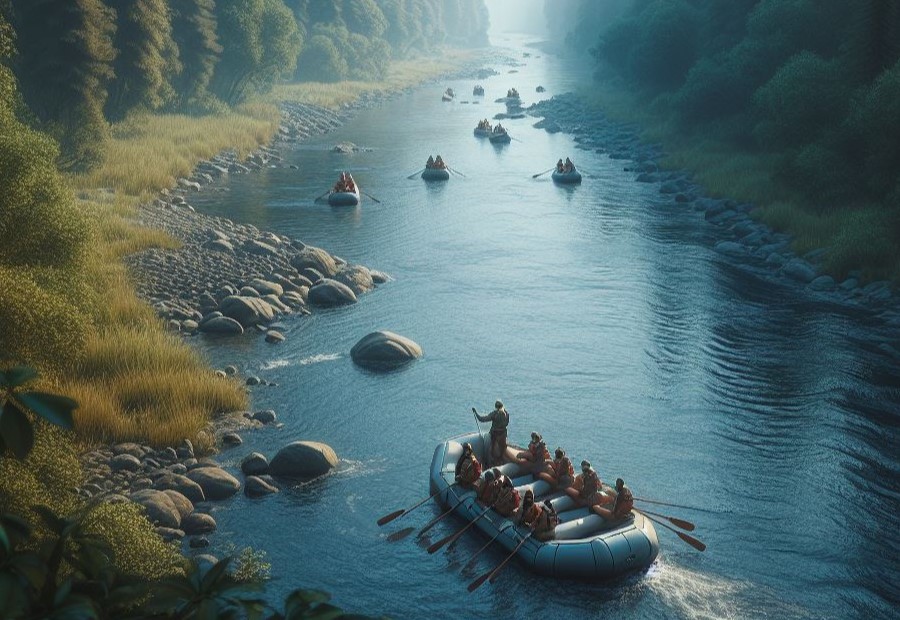
Get ready to dive into the thrilling world of river rafting! In this section, we’ll explore the essential skills and techniques you need to know before embarking on your river rafting adventure.
From attending a comprehensive rafting safety course to mastering the art of paddling techniques, we’ll equip you with the knowledge and abilities necessary to tackle the raging rivers with confidence and excitement. So, get your gear ready and prepare to conquer the rapids like a pro!
Attending a Rafting Safety Course
To ensure a safe and enjoyable river rafting adventure, it is crucial to attend a rafting safety course. This course will provide you with the knowledge and skills necessary to navigate the river safely and minimize risks.
- Research and find available safety courses in your area or at your chosen destination.
- Enroll in a reputable and certified rafting safety course to guarantee the quality of education you receive.
- Actively participate in the course, asking questions and seeking clarification whenever necessary.
- Acquire knowledge about important safety guidelines and protocols, such as equipment usage and emergency procedures.
- Practice hands-on skills including paddling techniques, self-rescue, and managing potential hazards.
- Follow the instructions provided by experienced instructors, and make sure to take note of their advice and recommendations.
- Develop a solid understanding of river signals and commands commonly used during rafting trips.
- Participate in mock scenarios or drills to enhance your preparedness for potential emergencies.
- Recognize the importance of teamwork and communication while rafting, as they play a vital role in ensuring everyone’s safety.
Attending a rafting safety course will equip you with the necessary knowledge and skills to navigate the river safely, minimize risks, and handle challenging situations that may arise during your adventure.
Practicing Paddling Techniques
Practicing paddling techniques is vital for a successful river rafting adventure. Here are some important techniques to master:
- Proper grip: Hold the paddle with both hands, with your hands spaced shoulder-width apart. The knuckles should be facing upward.
- Forward stroke: Dip the blade of the paddle fully into the water, then pull it back through the water alongside the raft. Keep your arms straight and rotate your torso for more power.
- Backward stroke: Reverse the motion of the forward stroke by pushing the paddle away from the raft and pulling it forward through the water.
- Draw stroke: Used to steer the raft, the draw stroke involves pulling the paddle towards the raft, perpendicular to its side. This will cause the raft to move in the opposite direction of the stroke.
- High side technique: If the raft is at risk of flipping, the high side technique involves leaning towards the higher side of the raft to keep it balanced and prevent capsizing.
- Bracing: Bracing is done by pushing the paddle firmly against the water’s surface to provide stability and prevent the raft from capsizing in turbulent waters.
Understanding Safety Guidelines and Emergency Procedures
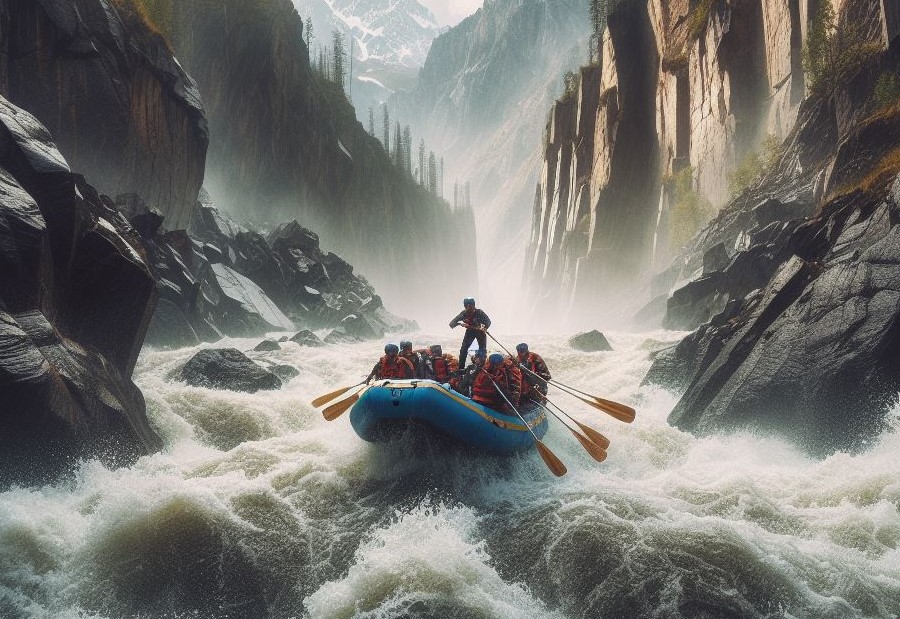
Prepare yourself for a thrilling river rafting adventure by understanding the safety guidelines and emergency procedures. Get ready to dive into the exciting world of river signals and commands, ensuring seamless communication with your team on the wild currents.
Additionally, learn how to handle common emergencies that may arise during your expedition. With this knowledge, you’ll be equipped to navigate the rapids with confidence and keep the adrenaline pumping throughout your amazing river rafting experience.
Knowledge of River Signals and Commands
Having knowledge of river signals and commands is crucial for a safe and enjoyable river rafting adventure. It is important to be aware of the following signals and commands:
- Forward paddle: To maintain momentum and propel the raft forward, paddlers should paddle in sync with each other.
- Back paddle: To maneuver the raft backward or avoid obstacles, paddlers should paddle in sync in the opposite direction.
- Stop: This command signals the paddlers to stop paddling and hold their paddles still.
- Left turn: The guide will shout “Left turn!” or use a paddle gesture to indicate a left turn. Paddlers on the left side of the raft should paddle backward, while those on the right side should paddle forward.
- Right turn: Similar to the left turn, the guide will shout “Right turn!” or use a paddle gesture to indicate a right turn. Paddlers on the right side of the raft should paddle backward, while those on the left side should paddle forward.
- High side: When at risk of flipping over, the guide may shout “High side!” This command requires everyone to quickly move to the opposite side of the raft to prevent tipping.
Dealing with Common Emergencies
When it comes to river rafting, it’s important to be prepared for any emergencies that may arise. Here are some steps to help you know how to deal with common emergencies:
- Stay calm and assess the situation: Take a moment to evaluate the severity of the emergency and determine the best course of action.
- Communicate with your group: Ensure that everyone is aware of the emergency and gather their input and ideas.
- Follow safety protocols: If there are specific emergency procedures in place, such as using specific signals or commands, make sure to follow them.
- Provide first aid, if necessary: If there are injuries, attend to them promptly and do your best to stabilize the person until professional help arrives.
- Call for assistance: If the situation requires outside help, use any available means to call for assistance, whether it’s using a whistle, radio, or reaching out to nearby authorities.
- Stay together. It’s important to stick together as a group during emergencies. This ensures that no one gets left behind or becomes separated.
- Use teamwork. If there’s a need to perform a rescue or assist someone in a dangerous situation, work together as a team to ensure everyone’s safety.
- Stay prepared. Always carry essential safety equipment, such as life jackets and a first aid kit, and know how to use them effectively.
By following these steps and being prepared for common emergencies, you can have a safer and more enjoyable river rafting experience.
Planning for Accommodations and Logistics
Planning for Accommodations and Logistics is crucial when preparing for a river rafting adventure. In this section, we’ll dive into the nitty-gritty details of booking accommodations and transportation, as well as managing food and supplies.
Discover the best strategies and tips to ensure a smooth and enjoyable experience. So, let’s get prepared and make the most out of your thrilling river rafting adventure!
Booking Accommodations and Transportation
When preparing for a river rafting adventure, booking accommodations and transportation are essential. Here are some important considerations to keep in mind:
- Location: Choose accommodations that are conveniently located near the river. This will make it easier for you to access the starting point of your rafting trip.
- Amenities: Look for accommodations that offer amenities suited to your preferences and needs. This could include comfortable beds, hot showers, and dining options.
- Transportation: Consider the transportation options available to you. If you’re traveling with a group, you may need to arrange for a larger vehicle to transport everyone to the river. If you’re traveling alone or with a small group, you may be able to use public transportation or carpooling services.
- Booking accommodations and transportation in advance: It’s recommended to book your accommodations and transportation well in advance to secure availability and potentially get better deals. This is especially important if you’re planning your river rafting adventure during peak seasons.
- Flexibility: While it’s important to book in advance, it’s also beneficial to be flexible with your travel dates. This can allow you to take advantage of any last-minute deals or availability.
- Reviews: Read reviews and ratings of accommodations and transportation services to ensure they meet your expectations in terms of safety, cleanliness, and reliability.
- Budget: Consider your budget when booking accommodations and transportation. Look for options that offer good value for money without compromising on quality or convenience.
By considering these factors when booking accommodations and transportation, you can ensure a smooth and enjoyable river rafting adventure.
Managing Food and Supplies
Plan your meals and bring enough food to sustain yourself throughout the duration of your river rafting adventure. Pack non-perishable items such as granola bars, nuts, and dried fruits for quick and easy snacks on the go.
Don’t forget to bring enough water to stay hydrated during your trip. Aim for at least 1 gallon of water per person per day. Consider bringing a portable stove and cookware if you plan on preparing hot meals. This will allow you to enjoy warm and satisfying meals even in the wilderness.
Pack meals that are easy to prepare and require minimal cooking time, such as pre-cooked pasta and canned soups. Bring a cooler or insulated bag to store perishable items like fresh fruits, vegetables, and sandwiches. Make sure to replenish your ice supply regularly to keep these items fresh.
Remember to bring essential cooking utensils such as a knife, cutting board, and cooking pot for meal preparation. Practice Leave No Trace principles by properly disposing of your food waste. Use designated trash bags and seal them tightly to prevent wildlife from getting attracted to your campsite.
Consider any dietary restrictions or allergies within your group and plan meals accordingly. Pack alternative options for those with specific dietary needs. Finally, always double-check that you have packed enough food and supplies before embarking on your river rafting adventure to ensure a comfortable and enjoyable experience.
Remember, managing food and supplies properly will contribute to the success and satisfaction of your river rafting adventure.
Environmental Responsibility and Leave No Trace Principles
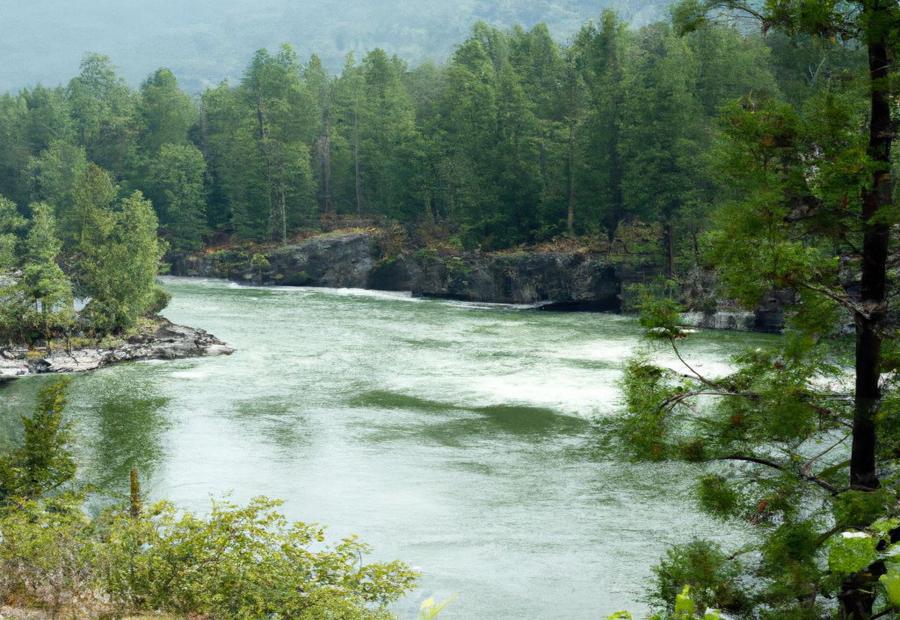
When embarking on a river rafting adventure, it is essential to prioritize environmental responsibility and follow leave no trace principles to minimize our impact on the natural surroundings. Here are key actions to take:
- Dispose of waste properly: Carry out all trash and dispose of it in designated receptacles to prevent pollution and preserve the cleanliness of the river and its surroundings.
- Minimize campfire impacts: If permitted, use existing fire rings or established fire pits. Keep fires small and completely extinguish them before leaving.
- Respect wildlife: Maintain a safe distance from wildlife, observe them from afar, and never feed or approach them. Preserve their natural behavior and habitat.
- Stay on designated trails: Stick to established paths to avoid trampling vegetation or disturbing sensitive habitats. This helps in preserving the natural beauty and biodiversity of the area.
- Leave what you find: Do not remove natural objects such as rocks, plants, or artifacts as souvenirs. Leave them for others to enjoy and for the ecosystem to thrive.
- Be considerate of other visitors: Respect other individuals’ experience by minimizing noise, giving way on trails, and being mindful of their enjoyment of the natural environment.
- Educate others: Spread awareness about environmental responsibility and leave no trace principles among fellow river adventurers and encourage them to follow the same practices.
- Support local conservation efforts: Contribute to organizations working towards preserving and protecting the rivers and their surrounding ecosystems.
By adhering to these principles and acting responsibly, we can ensure the beauty of our rivers and their natural environments are preserved for future generations.
Frequently Asked Questions
1. What should I wear for a whitewater rafting trip?
When preparing for a whitewater rafting adventure, it is important to wear the right attire to ensure comfort and safety.
Consider wearing board shorts or a bathing suit, quick-drying polyester sun layers, protective equipment such as a helmet and life jacket, secure footwear like river sandals or enclosed shoes with laces, and synthetic materials like polypropylene long underwear or wool socks for colder weather rafting.
2. What are some essential items to bring on a full day whitewater rafting excursion?
For a full day whitewater adventure, it is important to come prepared with a comprehensive packing list.
Some essential items to bring include a change of clothes, wet wipes or wet body wipes, spray tops or rain gear for protection from water and rain, a water bottle for hydration, sunscreen with SPF 30 or higher, a hat or rash guard for sun protection, and a dry bag to keep your belongings safe and dry.
3. How should I prepare for cold weather rafting?
If you are planning a whitewater rafting trip in cold weather conditions, it is recommended to wear appropriate clothing to stay warm. Consider wearing a wet suit or cool weather wetsuit, synthetic base layers or polypropylene long underwear, wool socks, and fleece or layers for added insulation.
Additionally, always listen to your guide’s safety instructions and use the provided protective equipment.
4. Can I go whitewater rafting if I have limited experience?
Yes, even if you have limited experience, you can still enjoy a whitewater rafting adventure. It is important to listen closely to your experienced river guide, who will provide safety tips and instructions throughout the trip.
Make sure to follow their commands and ask any questions you may have. Rafting is a group activity, and your participation is appreciated to ensure a safe and fun experience for everyone.
5. What should I do if I fall out of the raft during the trip?
If you happen to fall out of the raft during the whitewater rafting trip, it is important to stay calm and follow the proper procedure to ensure your safety. Try to swim towards the raft and grab onto the outside safety line.
If needed, call for a throw bag or paddle to assist you. Your guide will provide instructions on how to get back into the raft, either by pulling you in using the shoulder straps or throwing you a throw bag.
6. How can I make the most of my river rafting adventure?
To make the most of your river rafting adventure, it is important to have the right mindset and be prepared. Listen closely to your guide’s instructions and safety tips, as they are experienced in rafting and water safety.
Enjoy the adrenaline-pumping experience, have fun, and take in the unique perspective of paddling down a river. Don’t forget to bring a positive attitude, stay hydrated, and follow the comprehensive packing list provided by your chosen rafting company.

